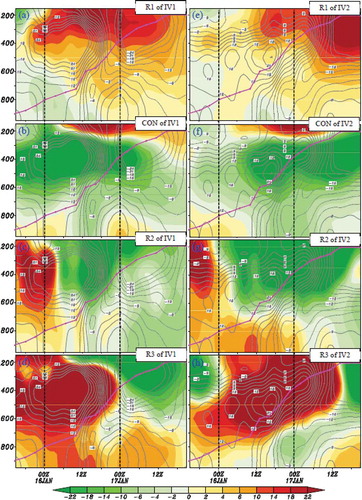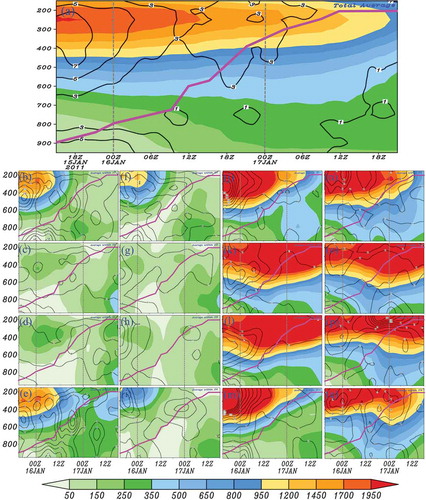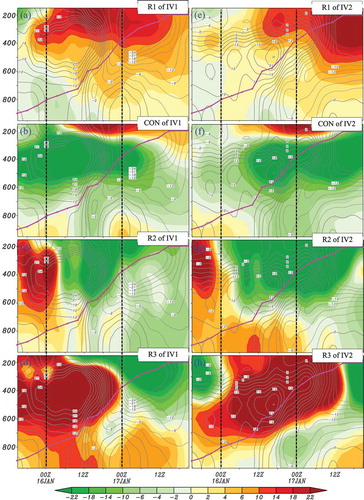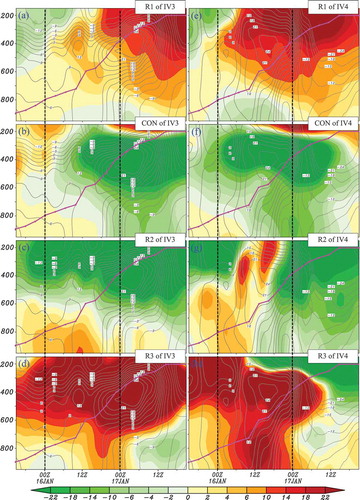Figures & data

Figure 1. The left-hand column shows the 900-hPa total wind KE (shading; units: J kg−1) and nonorthogonal wind KE (black lines with an interval of 20 J kg−1). The right-hand column shows the 900-hPa rotational wind KE (shading; units: J kg−1) and divergent wind KE (black lines with an interval of 10 J kg−1). The red solid box shows the central region (12° × 12°) of Cyclone A, and the purple dashed boxes illustrate 16 key regions (6° × 6°) of the cyclone.

Figure 2. Total region (a) and each key region (b–q) averaged rotational (shading; units: J kg−1) and divergent wind KE (black solid lines with an interval of 2 J kg−1), where the solid purple line marks the top level of the cyclone and the gray-dashed lines show the maximum development stage.

Figure 3. Budget terms of the rotational wind KE (shading; units: 10−3 J kg−1s−1) averaged within IV1 and IV2 (purple dashed boxes shown in )), where the gray contours are TOTR (units: 10−3 J kg−1s−1, with an interval of 3 × 10−3 J kg−1s−1), the solid purple line marks the top level of the cyclone, and the black-dashed lines show the maximum development stage.

Figure 4. Budget terms of the rotational wind KE (shading; units: 10−3 J kg−1s−1) averaged within IV3 and IV4 (purple dashed boxes shown in Figure 1(a)), where the gray contours are TOTR (units: 10−3 J kg−1s−1, with an interval of 3 × 10−3 J kg−1s−1), the solid purple line marks the top level of the cyclone, and the black-dashed lines show the maximum development stage.

Table 1. The most favorable and detrimental factors for the enhancement of lower-tropospheric rotational wind KE within key regions IV1–IV4.
